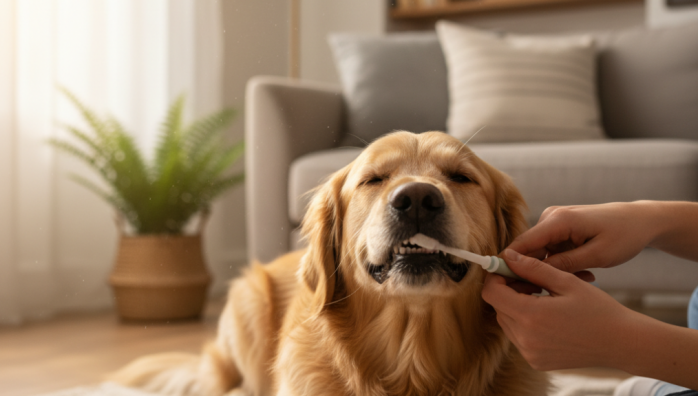At Home Tooth Brushing for Pets
by admin in Pet Care Basics 19 - Last Update November 18, 2025

I\'ll be honest, for years I ignored my dog’s teeth. I’d catch a whiff of that classic ‘doggie breath’ and just wave it off as normal. It wasn’t until a routine vet visit that the truth hit me. My vet pointed out the tartar buildup and gently explained that over 80% of dogs show signs of dental disease by age three. I felt a wave of guilt. All this time, I was focusing on good food and long walks, but completely neglecting a crucial part of my best friend\'s health. That was my wake-up call to finally tackle at-home tooth brushing.
Why i made tooth brushing a non-negotiable routine
Once I started researching, I realized dental health is about so much more than just bad breath. That plaque and tartar can lead to painful gingivitis, tooth loss, and even more serious issues. Bacteria from the mouth can get into the bloodstream and affect the heart, kidneys, and liver. For me, the potential cost of a professional cleaning under anesthesia was one thing, but the thought of my pet being in pain without me knowing was what really motivated me. Making this a daily habit suddenly felt as important as their daily meal.
My step-by-step guide to a stress-free start
Getting started was clumsy. My first attempts involved a wrestling match that left us both stressed. I learned quickly that patience is everything. This isn\'t a race; it\'s about building trust and a positive association.
Choosing the right tools for the job
My first mistake was thinking any old brush would do. I discovered that a soft-bristled pet toothbrush with a long handle gave me better reach, but a finger brush was less intimidating for my cat. The most critical part, however, is the toothpaste. Never use human toothpaste. It contains ingredients like fluoride and xylitol which are toxic to pets. I found a poultry-flavored enzymatic toothpaste, and it was a game-changer. My dog thought it was a treat, which was half the battle won.
Making it a positive experience
Here’s the slow-and-steady method that finally worked for me:
- Day 1-3: I let my pets lick a tiny bit of the pet toothpaste off my finger. No brushing, just positive association with the taste. I followed it with lots of praise.
- Day 4-6: I put the paste on my finger and gently rubbed it along their outer gumline. Still no brush. Just getting them used to me handling their mouth.
- Day 7-10: I introduced the finger brush (or toothbrush) with paste, touching it to their teeth for just a few seconds before praising them and giving them a treat.
- Day 11+: I gradually increased the brushing time, aiming for about 30 seconds on each side.
My simple brushing technique
I learned you don\'t have to go crazy. The vet told me to focus on the outside surfaces of the teeth, as that\'s where most tartar accumulates. I use small, gentle, circular motions, holding the brush at a 45-degree angle to the gumline. My pets are much more tolerant now that they know it’s a quick and rewarding process.
When your pet still refuses
Some pets, no matter how patient you are, will not tolerate brushing. I get it. With my very stubborn senior cat, I had to explore other options. While they aren\'t a perfect substitute for brushing, things like dental chews, water additives, and dental gels can definitely help reduce plaque. I see them as supportive tools in our dental care arsenal. Of course, this is what worked for my family, and I always recommend having a chat with your vet to create the best dental plan for your specific pet\'s needs and temperament.












